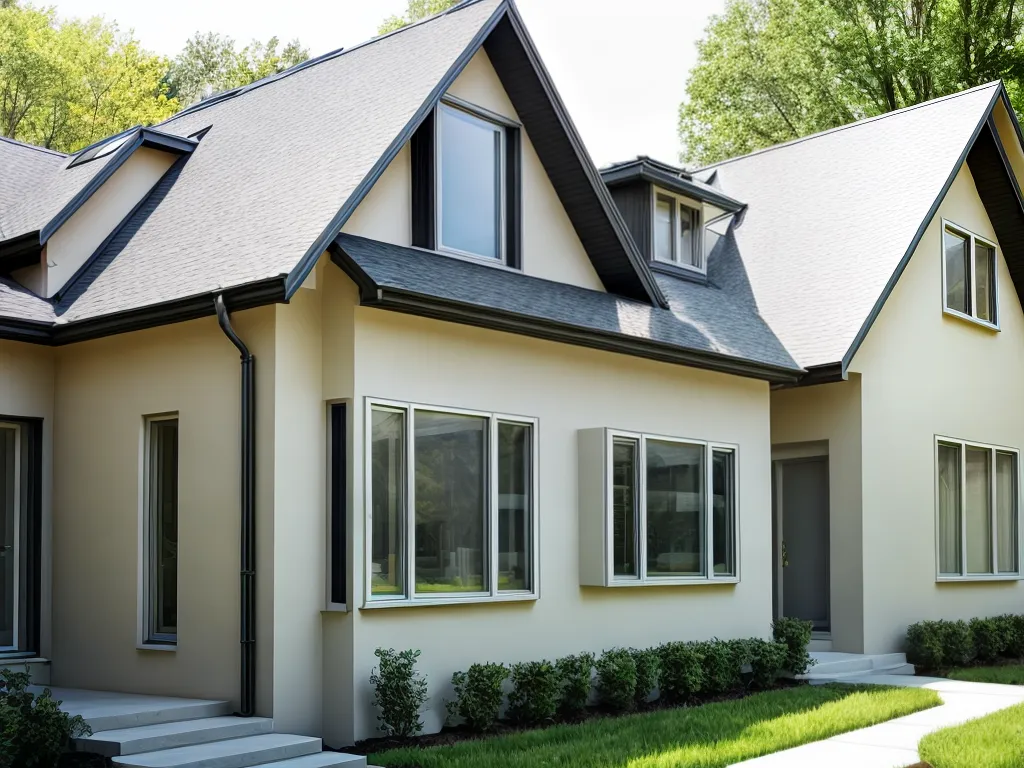
Improving your home's energy efficiency can help lower your energy bills while also reducing your carbon footprint. However, major renovations like replacing windows or buying new appliances can be expensive. Fortunately, there are affordable ways to boost your home's efficiency even if you're on a tight budget.
Conduct an Energy Audit
The first step is performing an energy audit to identify areas for improvement. Here's how I go about it:
-
I start by checking my monthly utility bills to see when my energy usage tends to spike. This helps pinpoint the biggest energy drains.
-
Next, I do a walkthrough of my home, noting drafty areas around doors and windows that could be letting in cold air or allowing cooled air to escape. I also look for places where warm air might be leaking out, like around outlets on exterior walls.
-
I examine insulation levels in the attic, walls, and floors. Insufficient insulation can lead to significant heat loss in winter and heat gain in summer.
-
I test appliances to see if any are unusually loud or hot. Noisy, hot-running appliances may be showing signs of inefficiency.
-
Lastly, I take stock of lighting to see where I can switch to more efficient LED bulbs.
Seal Air Leaks
One of the best ways I've found to boost efficiency is by sealing air leaks, which can account for up to 30% of heating and cooling costs. Some low-cost fixes include:
-
Applying weatherstripping around leaky doors and windows
-
Caulking cracks and gaps in the walls, floors, and ceilings with caulk
-
Adding foam gaskets behind outlet covers and switch plates
-
Installing door sweeps at the bottom of exterior doors
-
Covering fireplace flues when not in use
Properly sealing air leaks made a noticeable difference in the amount of hot/cold air escaping from my home.
Increase Insulation
Adding more insulation helps keep warm/cool air in your home. Here are budget-friendly ways I've improved insulation:
-
I used an insulation blower to add more cellulose insulation to my attic. This yielded a higher R-value for less than $500.
-
I purchased insulation batts from the hardware store to install around ductwork running through uninsulated spaces.
-
I used spray foam to fill any cracks and gaps around pipes, wires, and vents where air could enter.
-
I added plastic film over single-pane windows in the winter to create an extra insulated air layer.
-
I also use thermal curtains over windows and doors to slow heat transfer.
Upgrade Appliances
Replacing outdated appliances with ENERGY STAR models can lead to major efficiency gains. However, I found some budget-friendly alternatives:
-
Instead of buying a brand new refrigerator, I cleaned the coils on my old one and ensured it had proper air flow. This boosted its efficiency at no cost.
-
I attached AFFORDABLE SMART THERMOSTATS to better regulate my central air conditioning and heating systems. Being able to adjust temperatures remotely helps avoid wasted energy.
-
For appliances I used daily, like the laundry machine and dishwasher, I switched to ENERGY STAR models when I could get them at a discount. Even buying used ENERGY STAR appliances can be worthwhile.
Switch to LED Lighting
One of the fastest paybacks is upgrading inefficient lighting to LED bulbs. Here are helpful tips:
-
I prioritized replacing bulbs that are used most frequently, like kitchen and living room lights. The utility savings add up quickly.
-
I bought LEDs in multipacks when they were on sale rather than individually to save more.
-
For specialty bulbs like floods or candelabras, I purchased LED equivalents for a direct swap. Modern LED options are available for nearly all bulb types now.
-
I paired LEDs with motion sensors, timers, or daylight sensors so lights only turn on when needed. Having more control reduced waste.
Use a Programmable or Smart Thermostat
Installing a programmable or smart thermostat enabled me to set customized heating and cooling schedules to match when I'm home versus away. This prevented energy from being squandered heating or cooling an empty house. I found programmable thermostats starting around $30, making them very affordable. Smart thermostats with app control can be pricier ($200+) but offer added efficiency benefits.
Set Appliances to Energy Saving Modes
I ensured appliances like my refrigerator, dishwasher, and washing machine were enabled with their energy saving settings. This allows them to run fewer cycles, use less power, or turn off heating elements when not needed. Depending on the appliance, energy saving modes could be activated through push button controls or settings in a digital display. I read manuals to understand available options. Setting to energy saving made a measurable difference.
Take Advantage of Rebates and Tax Credits
Check for rebates and tax credits offered by utility companies, manufacturers, and local/federal governments. I was able to get rebates on new ENERGY STAR appliances and also qualify for tax credits when I upgraded my insulation and windows. Taking advantage of these incentives made pricey upgrades much more affordable.
In Conclusion
The steps outlined above allowed me to noticeably boost my home's energy efficiency without breaking the bank. Proper sealing, insulation, lighting, thermostat schedules, and appliance settings were all low-cost ways to start saving energy and money. I also took advantage of rebates and tax credits to make pricier upgrades like new windows and appliances more budget-friendly. With some diligence and handy DIY skills, you can find many affordable ways to make your home more efficient too. The savings definitely make the effort worthwhile.